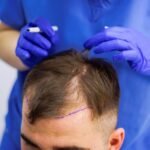Ostarine MK-2866 is a popular Selective Androgen Receptor Modulator (SARM). It’s widely used in the health world to assist muscle boom and fat loss. Unlike anabolic steroids, Ostarine offers these benefits with fewer facet outcomes. Because of its potential benefits, many are curious about its impact on other areas of health, which include libido and sexual features. This article explores the consequences of Ostarine on libido, which include capability blessings and dangers for sexual health.
Understanding Ostarine (MK-2866)
Definition and Mechanism of Action
Ostarine binds selectively to androgen receptors in the body. This means it can mimic a few consequences of testosterone without triggering the extreme side effects related to steroids. When taken, Ostarine activates unique receptors in muscle and bone that can lead to accelerated power and density. This isn’t the same as how anabolic steroids work, which could affect the entire body from time to time in unfavorable ways.
Common Uses and Benefits
Ostarine is mainly recognized for its muscle-constructing and fat-burning outcomes. Fitness fanatics and bodybuilders often look for Ostarine for sale to enhance their performance. It’s also being explored for feasible clinical uses, particularly in treating muscle-wasting diseases and osteoporosis. These fitness benefits make it an attractive preference for those trying to construct lean mass without severe risks.
Libido and Sexual Health: Key Factors
Defining Libido and Sexual Health
Libido, or sex drive, is encouraged through a combination of physical and psychological factors. Hormones, especially testosterone, play a sizable role. When hormone levels change, libido can increase or decrease in response. Physical health, mood, energy tiers, and relationship dynamics additionally affect sexual power.
Impact of Androgens on Libido
Androgens, like testosterone, are linked to sexual preference in women and men. An increase in androgen levels can typically boost libido, but at the same time, a decrease may have an alternative impact. Since Ostarine interacts with androgen receptors, it raises the question: can it also affect libido and average sexual health?
Does Ostarine Affect Libido?
Review of User Reports and Anecdotal Evidence
Reports from Ostarine customers provide mixed opinions. Some file growth in libido and physical power, while others show no change. A few people even revel in a decrease in libido, specifically if Ostarine affects their natural testosterone stages. This variability may confuse customers who want to understand what to anticipate.
Possible Mechanisms Behind Libido Changes
Ostarine’s impact on libido likely pertains to its androgenic properties. By partially mimicking testosterone, it can beautify sexual pressure in some users. However, as it is most effective as a partial androgen agonist, it does not continually stimulate libido as efficiently as testosterone. Some customers note a decrease in sexual desire if their testosterone becomes suppressed through the years.
Potential Side Effects of Ostarine on Sexual Health
Hormonal Imbalances and Suppression
A key risk of using Ostarine is testosterone suppression. When testosterone levels dip, libido often decreases as well. For some, this change may be temporary, but others may need Post Cycle Therapy (PCT) to bring hormone levels back to normal. PCT is often recommended after using Ostarine to prevent long-term hormonal imbalances.
Short-term and Long-term Effects
In the short term, users may see benefits in energy and muscle mass that can improve their confidence and potentially boost libido. However, long-term use or high doses can increase the risk of suppression, making it harder for the body to maintain stable hormone levels post-cycle. For some, this can lead to prolonged sexual health challenges if not managed correctly.
Mitigating Sexual Health Risks While Using Ostarine
Dosage Management and Cycle Recommendations
To minimize risks, users should stick to recommended doses and avoid extending cycles. Higher doses may suppress natural testosterone more aggressively, while shorter cycles help keep suppression minimal. It’s also essential for users to be aware of their limits and avoid excessive or prolonged use.
Post Cycle Therapy (PCT) and Recovery
PCT is often crucial after an Ostarine cycle to help restore testosterone levels. Common PCT methods may involve supplements or medications designed to boost natural hormone production. Effective PCT can help bring back normal hormone levels, which is essential for maintaining libido and overall sexual health.
Monitoring and Health Checks
Regular hormone tests can help users track their testosterone levels and prevent long-term suppression. Seeking advice from healthcare professionals experienced with SARMs is also beneficial. They can provide insights into safe usage and assist with managing any adverse effects that arise.
Alternative Approaches for Enhancing Libido and Muscle Growth
Non-SARM Options for Muscle Growth
For those hesitant about Ostarine’s impact on hormones, natural supplements, and traditional training methods can be viable alternatives. Protein, creatine, and branched-chain amino acids (BCAAs) are widely used for muscle growth with fewer health risks.
Lifestyle Adjustments for Libido and Sexual Health
Libido can also improve through lifestyle adjustments like diet, exercise, stress management, and good sleep hygiene. These natural methods help maintain balanced hormones and are essential components of overall sexual health.
Conclusion
Ostarine’s effect on libido and sexual health is complex and can vary widely. While some users experience increased energy and libido, others may find it suppresses testosterone and impacts sexual desire. Responsible use, guided by appropriate doses and post-cycle therapy, can help manage these risks. Monitoring hormone levels and working with healthcare professionals are key to staying safe. For those interested in the potential benefits, weighing the risks carefully is essential.




